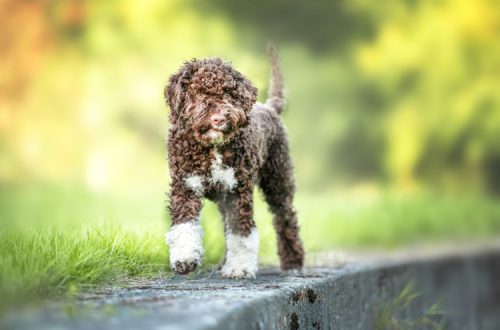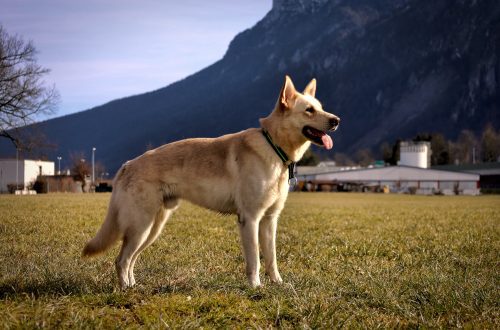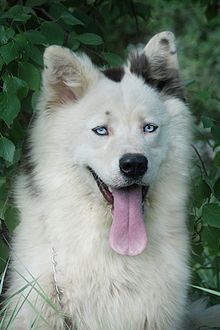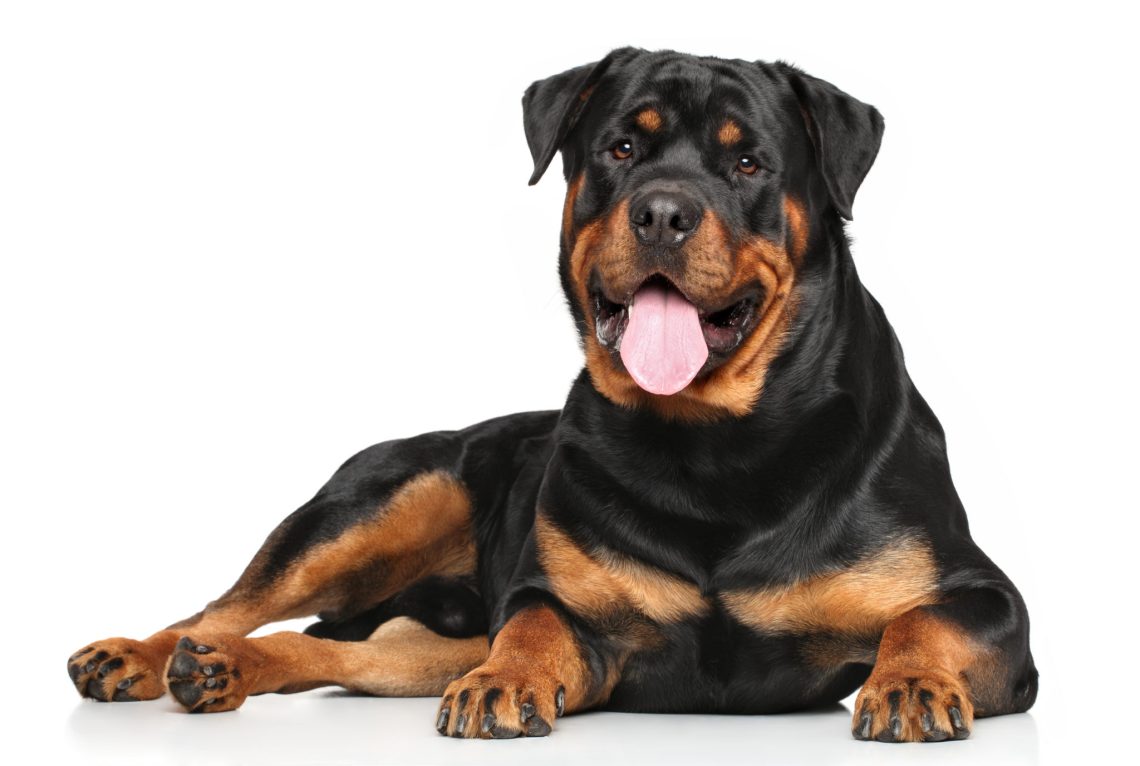
Rottweiler
Other names of Rottweiler: Butcher’s dog , Rottweiler Metzgerhund
The Rottweiler is a born protector and a reliable guard with a strong independent character. Clever, serious and infinitely devoted to the owner.
Contents
- Characteristics of Rottweiler
- Basic moments
- History of the Rottweiler breed
- Video: Rottweiler
- Appearance of a Rottweiler
- Photo of an adult Rottweiler
- Rottweiler personality
- Training and education
- Types of training courses for Rottweilers
- Care and maintenance
- Health and disease of the Rottweiler
- How to choose a puppy
- Photos of Rottweiler puppies
- How much does a rottweiler cost
Characteristics of Rottweiler
| Country of origin | Germany |
| The size | large |
| Growth | 56-68 cm |
| Weight | 42–50 kg |
| Age | up to 12 years |
| FCI breed group | Pinschers and Schnauzers, Molossians, Mountain Dogs and Swiss Cattle Dogs |
Basic moments
- Rottweilers reach full physical and psychological maturity by two years.
- They require a long walk in combination with active games and physical activity.
- They need a serious and strong mentor. They will create a lot of problems for inexperienced owners who do not have the skills to work with service dogs.
- Rottweilers do not tolerate high temperatures, but they feel quite comfortable in the cold, thanks to their dense undercoat.
- They recognize the dominant role of the owner, but absolutely do not accept violence against their own person.
- They are quick-witted, able to make decisions with lightning speed if there is a threat to human life and health.
- They have a good appetite, thanks to which they are able to quickly “eat up” extra pounds and lose shape.
- They get along well with the pets they grew up with.
- Small dogs and puppies are treated with indifference and contempt. In large individuals, they feel rivals, often provoking them into a fight.
- Animals that have not completed a mandatory training course are usually uncontrollable and pose a danger not only to others, but also to their own owner.
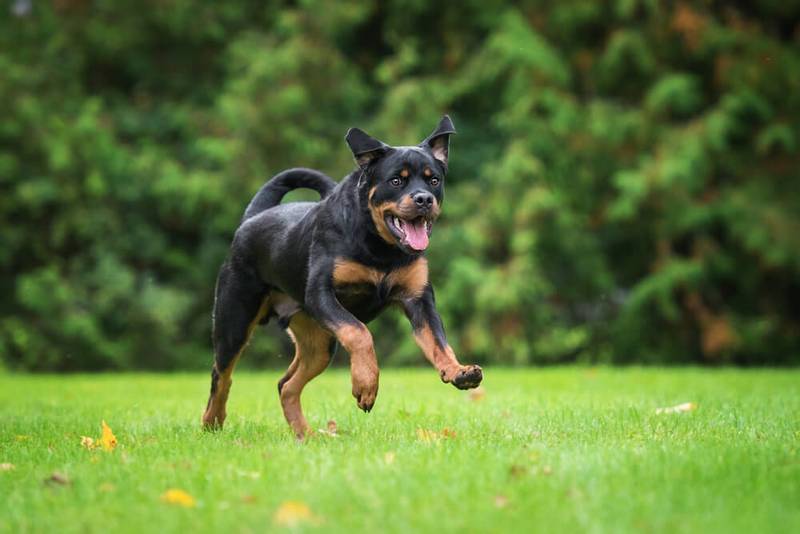
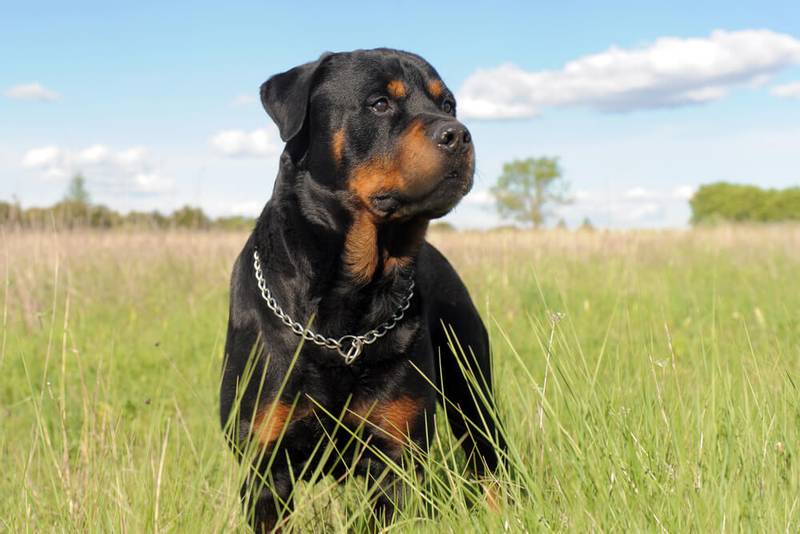
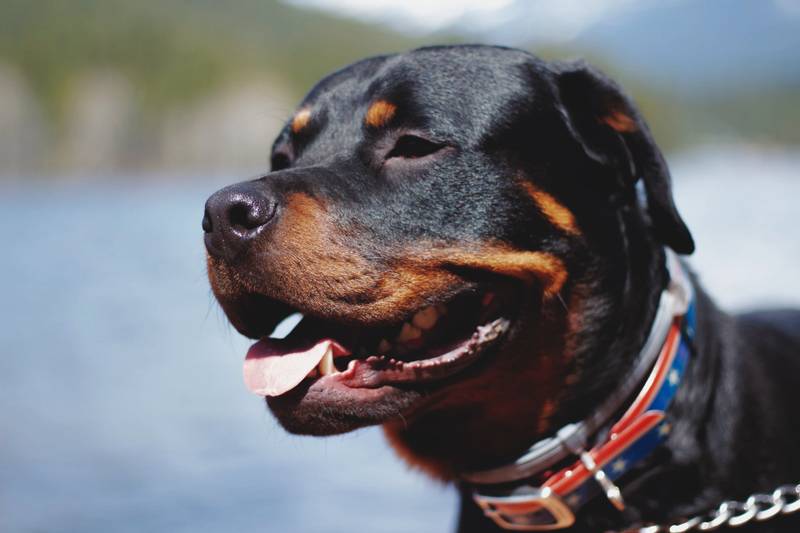
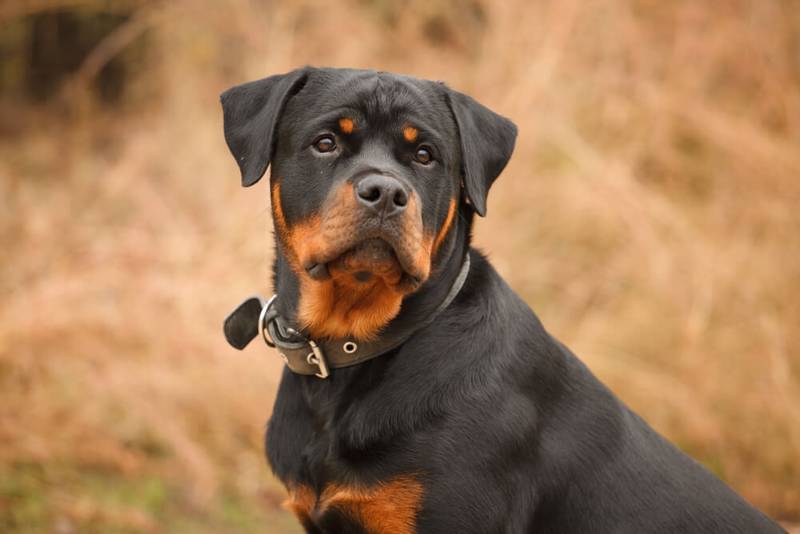
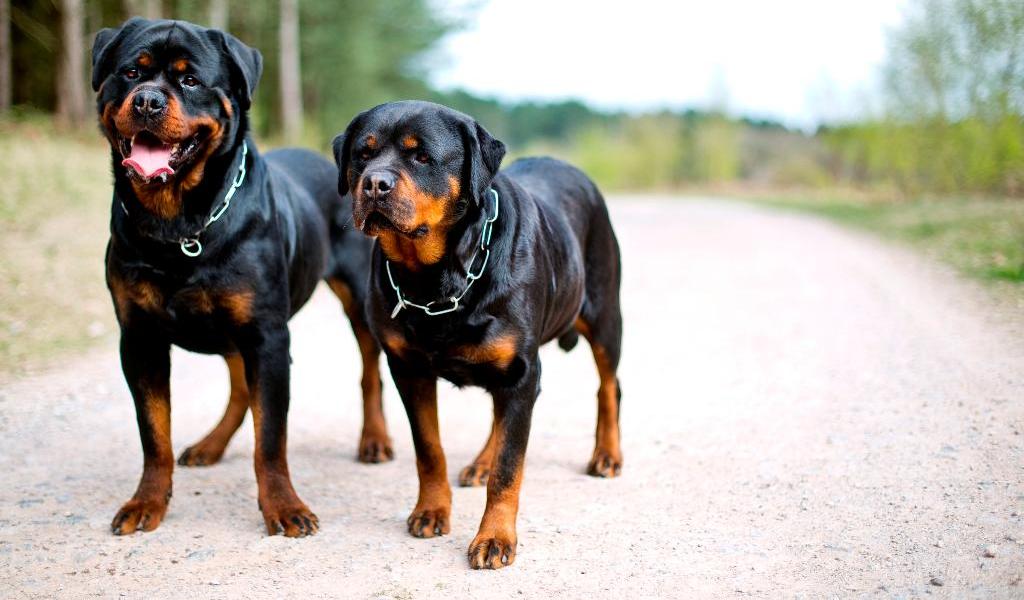
Rottweilers are serious and energetic brutals, whose main purpose is to serve people. It is from Rottweilers that the best rescuers and guides are obtained, ready at any moment to risk their own lives in the name of saving the human. On the street, these muscular beauties are the embodiment of threat and alertness. They are energetic, observant and always in control. However, as soon as the dog returns home, an affectionate sloth wakes up in it, occupying a soft sofa and ready to absorb sweets in kilograms.
History of the Rottweiler breed
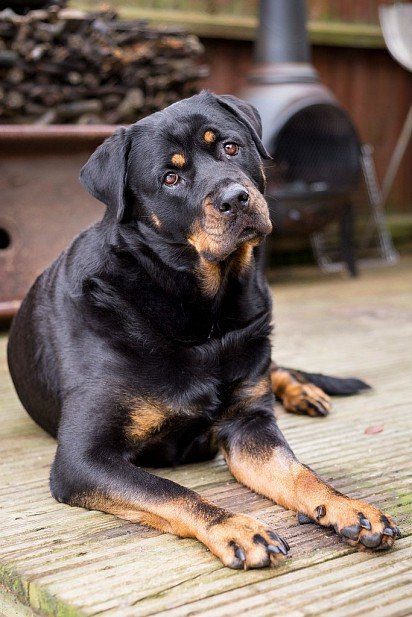
The ancestors of the Rottweilers – the Molossians – made their way to the territory of Western Europe along with the legions of Claudius Augustus, after the Roman convoys crossed the Alps and crushed the southern part of modern Germany. The soils of the new colony were distinguished by fertility, so the Molossians quickly found a worthy occupation here: large and ferocious dogs began to guard and graze cattle.
The breed got its name in honor of the city of Rottweil in southwestern Germany. Located at the crossroads of trade routes and surrounded by the stormy Neckar, this provincial corner was the main supplier of meat for the German principalities. Well, since there were a lot of hunters to eat this nutritious product for free in the Middle Ages, specially trained dogs were involved in the protection of meat wagons in Rottweil. By the way, at first the four-legged guards were called Metzgerhund, which literally means “butcher’s dog”.
Rottweil burghers willingly used strong and serious animals not only as watchmen, but also as carriers of meat products. Rottweilers harnessed to carts delivered juicy steaks and tenderloin, thereby relieving their owners of the need to maintain draft cattle. However, after the railroads ran through Rottweil and cattle breeders were able to transport their goods in a new, faster way, the need for breeding dogs disappeared, and the breed began to gradually degenerate.
They remembered Rottweilers only at the beginning of the 20th century, thanks to a curious incident widely covered by the German press. The essence of the incident was that during a scuffle with sailors who were on a spree, the sergeant-major of the Stuttgart police set his Rottweiler on violators of the order. The animal in a matter of minutes “resolved” a dangerous conflict, turning the brave sailors into a shameful flight. After this incident, the breed regained its previously lost popularity and by 1921 acquired its own fan club.
Rottweilers reached Russia only in 1914. Initially, the hardy and efficient “Germans” were imported as working dogs, able to fight predators and guard livestock. However, after the end of the Second World War, they were assigned another “honorable” mission: the protection of Gulag prisoners. Soviet breeders spent a lot of time and effort trying to create a new “model” of the escort dog, which is particularly cruel. Such individuals were indeed bred, but it became absolutely impossible to consider them as pets.
Everything changed in the 80s, when the Rottweiler male Harras Steinkopf was brought from Germany to the USSR. Outwardly, this tall handsome man stood out noticeably against the background of his rude and ferocious relatives. In addition, the animal had a relatively calm and peaceful disposition, which gave hope that its descendants would be able to get along with a person as a friend and companion.
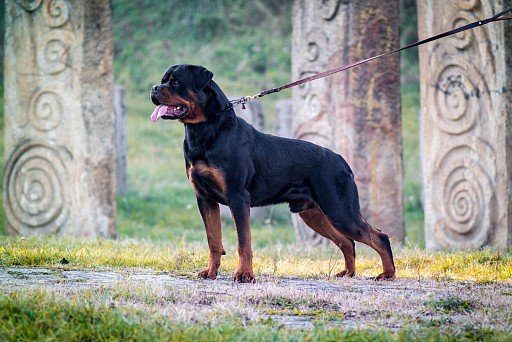
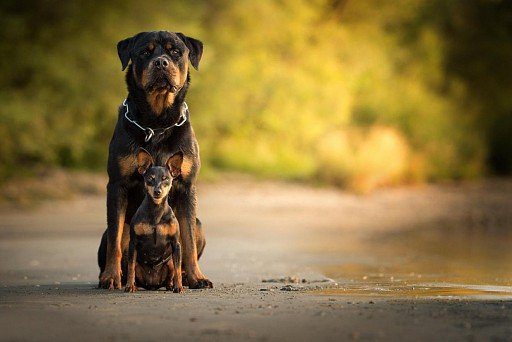
Video: Rottweiler
Appearance of a Rottweiler
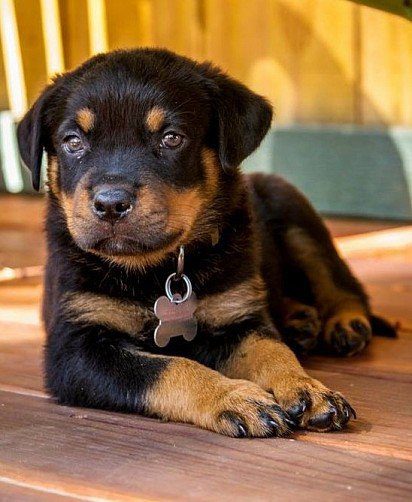

Rottweilers are the athletes of the canine world. These hard-hitting and “pumped up” beauties sink into the soul precisely with their harsh power. They literally exude calmness and reliability. The standard weight of an adult male is 50 kg, females – up to 45 kg.
Head
The skull is of medium size, with developed cheekbones and a prominent forehead. There is a prominent occipital protuberance. The muzzle is level, broad at the base and tapering towards the nose.
Nose
The lobe is black, slightly “stretched” in width, with impressive nostrils.
Teeth and jaws
The jaws of the Rottweiler are massive, of sufficient width. Bite – “scissors”. The teeth are strong and strong. The ideal number of teeth is 42.
Eyes
Almond-shaped, small, with eyelids close to the eyeball. The reference shade of the iris is dark brown. The look is open, bold, but without aggression and malice.
Ears
The ears of the Rottweiler are small, hanging, triangular in shape. Set high and wide at the same time. The edge of the ear closely adjoins the zygomatic zone, which creates the illusion of a wide, massive forehead.
Neck
Muscular, but “dried” type, not very long. There is a slight curve at the top.
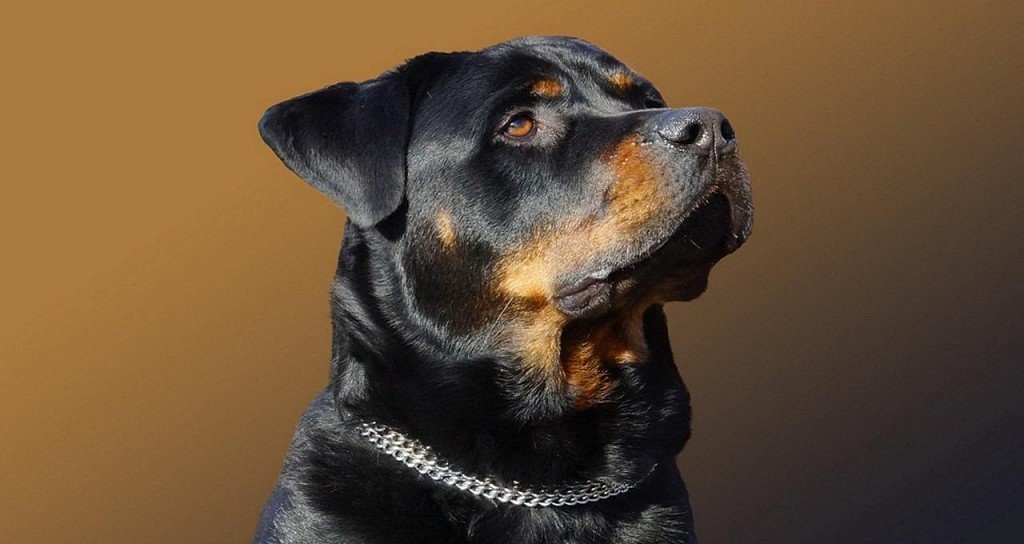

Frame
A strong, developed back combined with a short, dense loin and a rounded croup. The chest is spacious and deep. The chest bone is massive. The groin area is noticeably tucked up.
limbs
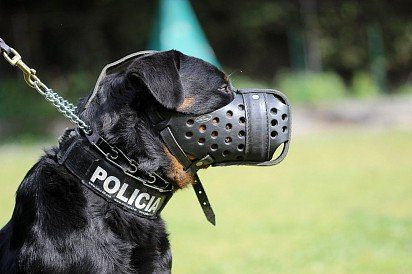

The front legs are straight. The shoulders are close to the sternum, the elbows are pressed to the body of the dog. The angle of inclination of the blades is 45°. The forearms and metacarpus are developed. The hind limbs of the Rottweiler are even, placed at some distance from each other. The thighs are of an elongated type, with good musculature. Articulation angles are obtuse. Paws are rounded, hard, compressed into a “lump”. The pads are elastic. The nails are short but strong. The hind legs are noticeably longer than the front.
Tail
The tail of a Rottweiler is long, continuing the upper line of the back. It is not subject to mandatory cupping, therefore this procedure is carried out exclusively at the initiative of the breeder.
Skin and wool
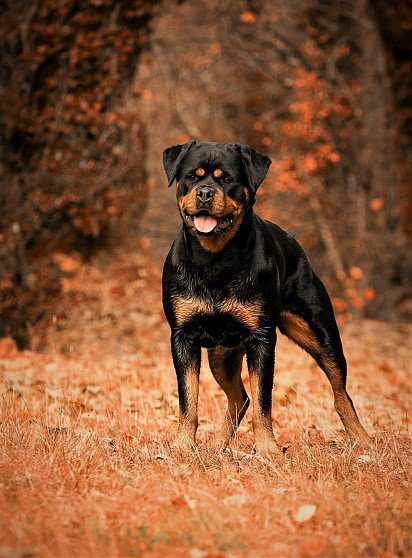

The skin is smooth. It gathers into shallow longitudinal wrinkles on the head if the dog shows curiosity. According to the standard, skin folds on the skull of an animal in a calm state are unacceptable. The coat is uniform: short thick undercoat + harsh outer coat, close to the body. The hair on the hind legs is longer.
Color
The color of the Rottweiler is black, with brownish-reddish, well-defined tan marks. Locations of the tan: throat, chest, legs, cheekbones, area under the eyes.
Major disqualifying vices
- Inconsistency with the sexual type (males in the type of females and vice versa).
- Anger, irritability, cowardice, insecurity.
- Inversion and eversion of the eyelid, eyes of different shades, yellow color of the iris.
- Incorrect bite, incomplete set of teeth.
- Excessively long and slightly wavy coat.
- White marks.
Photo of an adult Rottweiler
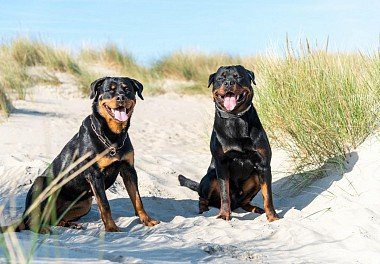

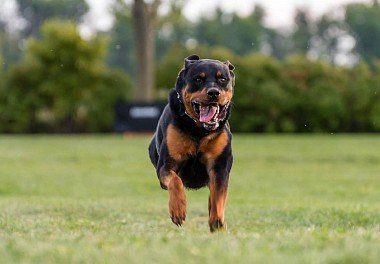

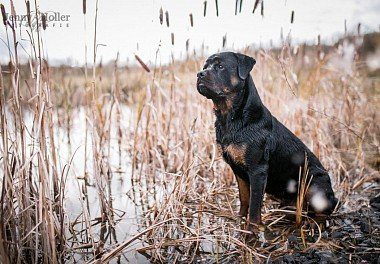

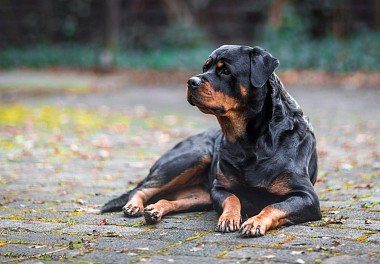

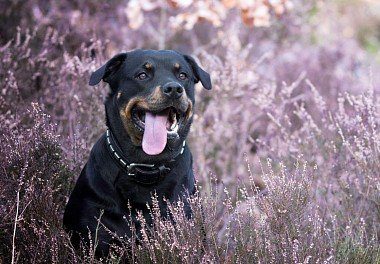

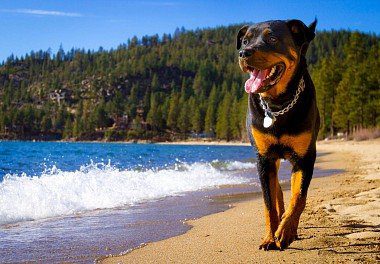

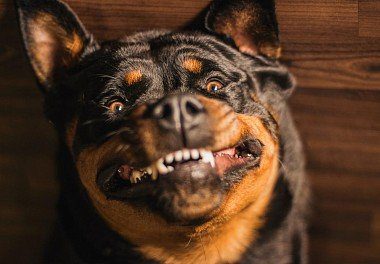

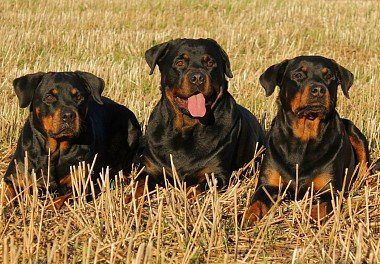

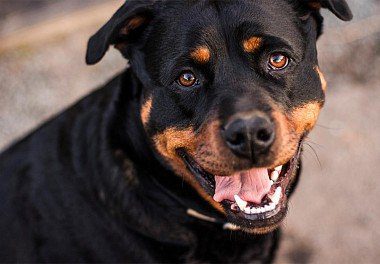

Rottweiler personality
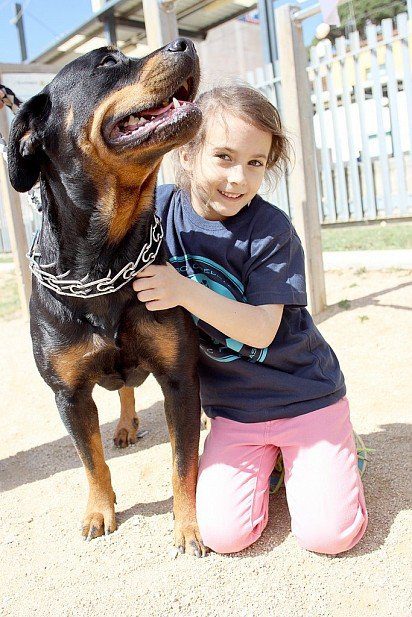

The Rottweiler is a born fighter, ready to defend his owner 24 hours a day, 365 days a year. At the same time, in an informal setting, these muscular bodyguards turn into charming bumpkins who love to take a nap or fool around in the company of people they like. They get along well with children, patiently enduring their pranks and whims, and are happy to perform small tasks for other family members. However, the kindness of representatives of this breed does not extend beyond their own apartment. Any stranger, be it a small child or an adult, is considered by the Rottweiler as a potential threat, and the animal never changes this rule.
The Rottweiler is a single owner dog. The change of owner is difficult for animals to endure: they become depressed, run away, show uncontrolled aggression. If in the presence of a pet you stroked or treated another animal, be prepared to observe the discontent and jealousy of the dog in all its glory. Rottweilers do not like to share the attention of the owner with other four-legged brothers.
Paradoxically, but representatives of this breed are very sensitive to noise, fuss and domestic conflicts. If the owners often find out among themselves the relationship in a raised tone, this will necessarily affect the mental health of the pet. Rottweilers raised in such a nervous environment tend to have behavioral deviations and show aggression even towards their own owners.
The Rottweiler attacks the offender quickly and without warning. Seized with rage, representatives of this breed do not feel pain, so it is almost impossible to drag a dog that has attacked a person or other animal. At the same time, Rottweilers do not differ in particular vindictiveness: after the fight, the dog cools down rather quickly, without making repeated attempts to attack.
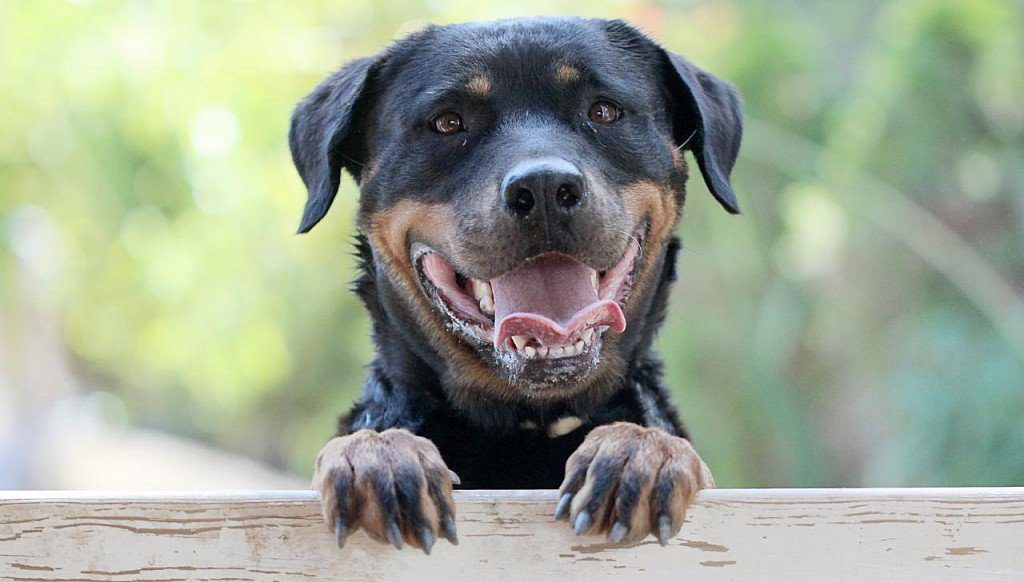

Training and education
Keeping a Rottweiler at home that has not completed a training course is a serious extreme, which in the future will cost the owner of the dog too much. When buying a puppy of this breed, start looking for an experienced trainer for him in advance. Paid training courses are also relevant when it comes to the upbringing and socialization of an adult that previously lived with another owner.
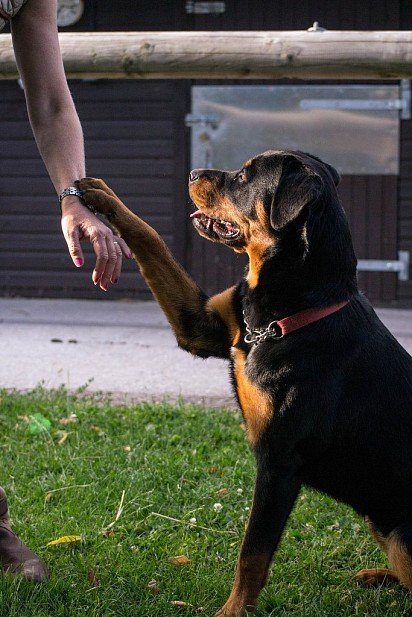

In order to save the budget, the role of a coach can be taken on. Start training your puppy from the day he enters your home. Start with the simplest commands and work your way up, but keep in mind that young Rottweilers can’t focus on one thing for long. Accordingly, the duration of one lesson should not exceed 10-15 minutes.
The main skills that a puppy should master by the year:
- 1.5-2 months – response to the nickname, commands: “Place!”, “Eat!”;
- 2-3 months – the ability to walk on a leash, the commands: “No!”, “Fu!”, “Come to me!”;
- 3-4 months – commands: “Give a paw!”, “Show your teeth!”;
- 4-5 months – education of good habits and norms of etiquette (the habit of not picking up objects from the ground, refusing treats from the wrong hands), commands: “Aport!”, “Nearby!”, “Walk!”, “Wait!”;
- 5-6 months – commands: “Voice!”, “Barrier!”, “Forward!”, “Back!”;
- 6-12 months – the formation of a calm attitude to noise (the sounds of public transport and others), lessons on finding objects by smell;
- 12 months and further – the ability to take the trail and detain the attacker, the protection of the owner during the attack; commands: “Face!”, “Drop it!”.
Six-month-old puppies are often stubborn and self-willed, so the “carrot” method no longer works with them. In addition, during this period of life, the animal awakens a passion for dominance: young Rottweilers begin to growl at the owner, and sometimes bite him. To put a presumptuous teenager in his place and assert his own authority, use punishments. These include: depriving the dog of treats, lifting it off the ground, accompanied by shaking, squeezing the muzzle.
Important: when walking on a leash, the Rottweiler must firmly grasp that the right to plan the trajectory of movement belongs entirely to the owner.
It is necessary to socialize a puppy from the first weeks of life. Arrange meetings with other dogs for the animal, go with him to visit friends, walk the animal in noisy and crowded places. The puppy must understand that the world is not limited to the walls of the house and it is full of other living beings. During walks, behave calmly so as not to unnerve the animal once again and not provoke it to attack passers-by and other dogs.
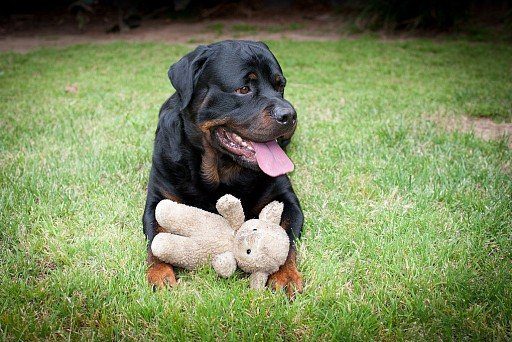

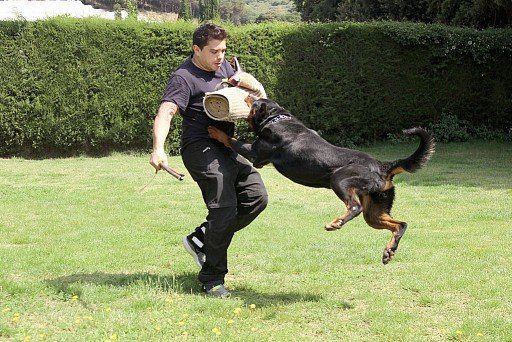

Types of training courses for Rottweilers
- General training course (OKD) – training in a complex of basic commands, as well as practicing the ability to pass an obstacle course, followed by passing exams in the RKF.
- Protective sentry service (ZKS) is a complex of security and protective skills developed for animals serving in law enforcement agencies. To date, there are “light” versions of the ZKS courses aimed at teaching the animal how to protect and protect the owner.
- Guided City Dog (UGS) is a simplified course for domestic dogs, the main task of which is to help the pet to navigate correctly in the urban environment. As part of the UGS, the Rottweiler is taught the basics of behavior in public transport and crowded places, patiently waiting for the owner. After completing the course, the animal receives a diploma from the kennel club.
Care and maintenance
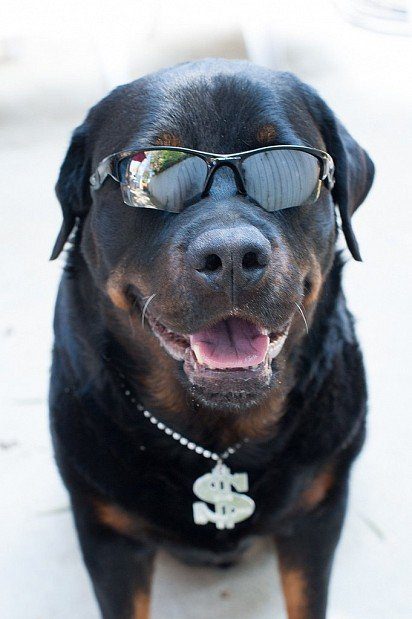

Keeping a service breed dog is always a big responsibility, because such animals require a firm hand and constant control. The Rottweiler, of course, can take root in an apartment, but the best habitat for bodyguard dogs would be a country house with a booth and an aviary equipped in the yard. In the warm season, the animal can be left in the enclosure around the clock, but with the onset of frost, it must be moved to a heated room or taken into the house.
Walking Rottweilers is supposed to be twice a day, at least for 10-20 minutes, and preferably an hour and a half. Walking must be combined with intense physical activity and active games to keep the pet in shape. By the way, not all representatives of this breed like physical activity: many individuals prefer to run for many hours lying on the couch. In such cases, the dog will have to be artificially stimulated with praise or the promise of a treat.
Hygiene
Caring for a Rottweiler does not take much time. They comb the dog a couple of times a week, bathe it 2-3 times a year, the rest of the time limiting themselves to washing the pet’s paws after a walk. The claws of animals are cut as needed, which may never come, since the Rottweiler, leading an active lifestyle, grinds off the claw plate in a natural way. Once a week, you need to set aside time to check and clean your ears. The ear funnel is cleaned with a piece of cloth dry or moistened with an alcohol-free lotion. Dogs teeth are cleaned with a gauze swab with soda 4 times a month.
Feeding
Adults are fed twice a day, puppies under the age of six months are recommended to be fed three times a day. The daily food intake should be no more than 5% of the total body weight of the animal. The amount of industrial feed is calculated according to the formula: 20-40 g of “drying” per kilogram of dog weight.
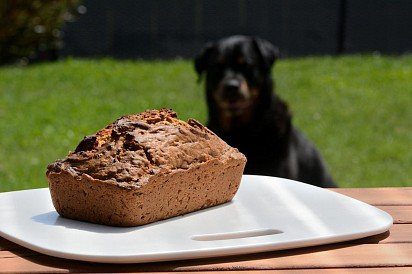

Since most dogs have a tendency to overeat, the number of calories a dog consumes must be carefully monitored. In particular, animals that overeat or have begun to gain weight may benefit from cutting back on their rations. The same should be done with older dogs, whose metabolism is no longer so intense. In particular, the “retirees” reduce the amount of carbohydrate-containing products, but at the same time increase the frequency of feeding (up to 3 times). Once a week, Rottweilers have a fasting day on fermented milk products and water.
List of foods that should be present in the diet of an adult Rottweiler:
- lean meat (lamb, rabbit, lamb, beef) or offal;
- raw or boiled fillet of sea fish;
- raw or boiled egg (twice a week);
- dairy products;
- cereals (rice, oatmeal, buckwheat);
- vegetable oil;
- vegetables.
Do not give your pet:
- legumes;
- sweets and chocolate;
- sausages;
- tubular and fish bones;
- citrus;
- river fish;
- pork.
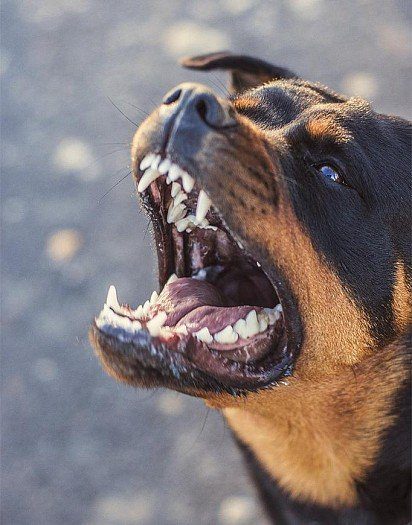

The food bowl is placed on a vertical stand at the level of the dog’s chest, which helps to form the correct posture of the puppy. The dishes from which the Rottweiler eats should be enameled, metal or ceramic, but in no case plastic.
Important: Rottweilers are fed only warm food. The use of chilled or excessively hot dishes provokes gastritis in the animal.
As for dry food, premium holistic options should be preferred here. It is forbidden to mix “drying” with natural products, while the alternation of wet and dry industrial feeds is welcome.
Nutritional discipline is a must for Rottweilers. The pet bowl should be filled with food twice a day and removed 15 minutes after the start of the meal. Resist the temptation to give your dog a snack and do not keep leftover food from breakfast or dinner in a bowl, in the expectation that in a couple of hours a hungry animal will finish it. There should always be clean water in the Rottweiler’s bowl.
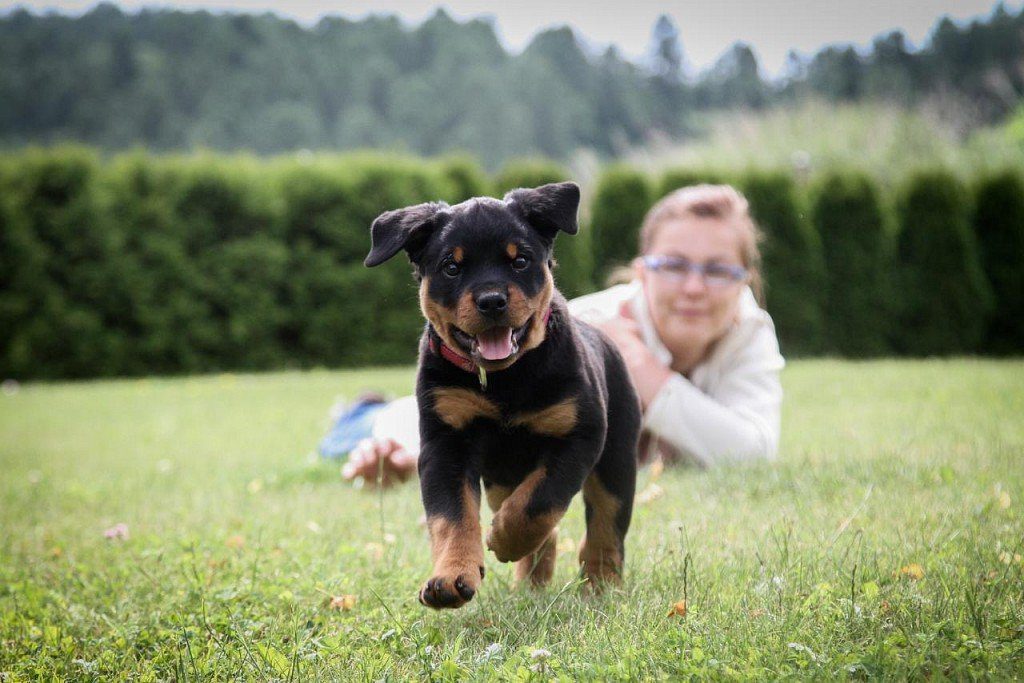

Health and disease of the Rottweiler
Like most large breed dogs, Rottweilers live between 8 and 10 years. Exceptions to the general rule also take place: with proper care and tireless care, individual individuals are able to live another 3-5 years in excess of the established norm. Due to their massive build, Rottweilers give the impression of being healthy, visiting the veterinarian’s office only in case of routine vaccinations. In fact, these dogs have a lot of ailments.
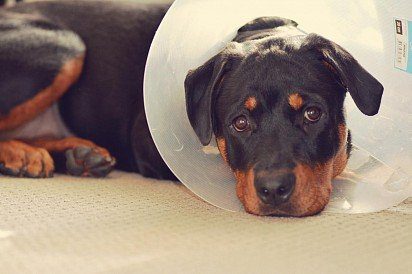

The most common diseases of Rottweilers:
- dysplasia of the hip and elbow joints;
- osteomyelitis;
- Addison’s disease (an autoimmune disease associated with dysfunction of the adrenal glands);
- aortic valve stenosis;
- retinal atrophy;
- cataract;
- von Willebrand disease (low blood clotting);
- gastrectomy (intestinal volvulus).
Some individuals may experience kidney problems, as well as disorders in the functioning of the nervous system. Slightly less common is a congenital disease such as hypotrichosis (baldness).
How to choose a puppy
For inexperienced owners who decide to buy a Rottweiler for the first time, it is more expedient to opt for bitches that have a softer character and learn commands faster. They make highly skilled guards. The only disadvantage of “girls” is that they do not tolerate other bitches near them.
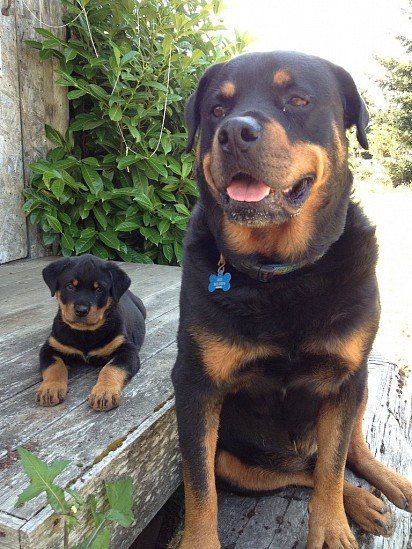

Male Rottweilers look more status, but they need a serious male mentor. Most “boys” are prone to wandering, so bringing a male animal into the house should only be done if you are ready to carefully correct his behavior. It is better to take a puppy to the house at the age of 2-3 months, since during this period the animals do not yet show stubbornness and are easily trained. Be sure to get to know the mother of the baby, not forgetting to check with the staff of the nursery her age. Ideally, the bitch should be between 2 and 8 years old.
To rule out the possibility of hereditary joint dysplasia, ask the breeder for X-rays of the puppy’s parents’ limbs. Check the living conditions of the future pet: puppy enclosures should be clean and dry. In addition, toys or substitute objects should be present in the cages of babies. It is wiser to give preference to puppies with a dark tan color, because after the first molt, the coat of Rottweilers often lightens. In addition, individuals of a darker color are stronger and more enduring. Carefully examine the baby’s abdomen for signs of an umbilical hernia. Pay attention to dewclaws: in thoroughbred puppies, they should be docked.
Even if you see a future bodyguard in an animal, give up overly aggressive individuals. A proper Rottweiler is a balanced Rottweiler. In self-respecting kennels and training schools, representatives of the breed that are too vicious are rejected as unsuitable for training and further breeding. At the same time, the stubbornness of a dog is considered an indicator of a strong character. These individuals make excellent watchdogs.
You can test puppies for courage with sound effects. For example, clapping your hands over the animal’s head or ringing a bell. An adequate Rottweiler will definitely listen to new sounds and show curiosity, and too cowardly kids will scatter.
Photos of Rottweiler puppies
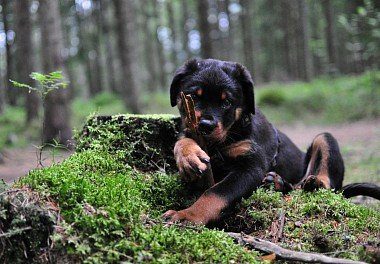

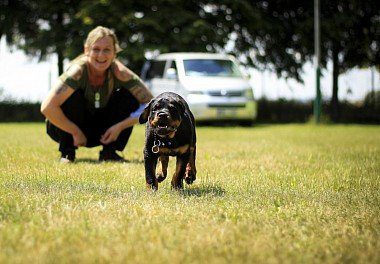

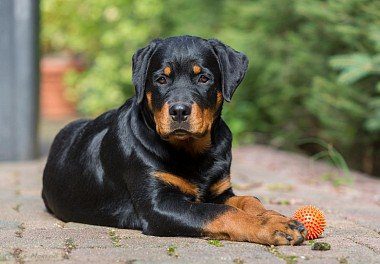

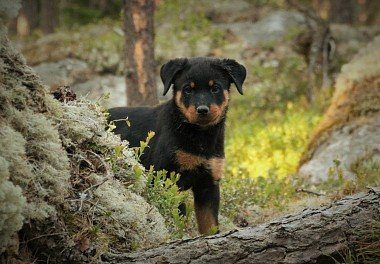

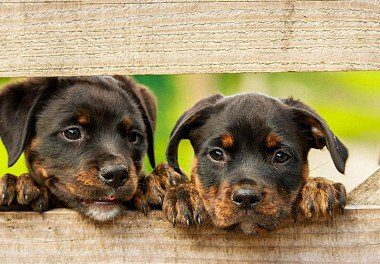

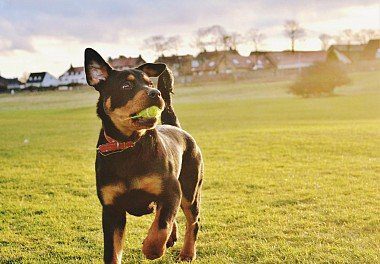

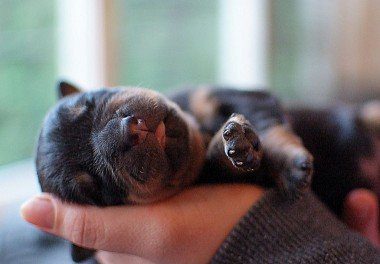

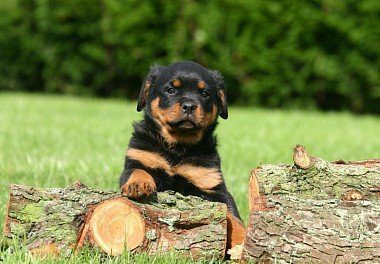

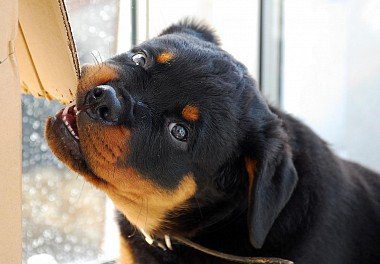

How much does a rottweiler cost
The Rottweiler is a mid-range breed. You can buy an active healthy puppy with RKF metrics from famous parents for an average of 400 – 500$. A more economical option is animals with exterior defects, without documents, as well as those born as a result of unscheduled mating. The average price tag for such individuals is 150-200$.





